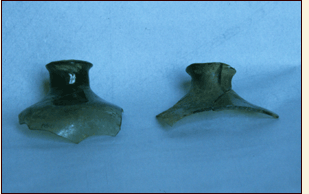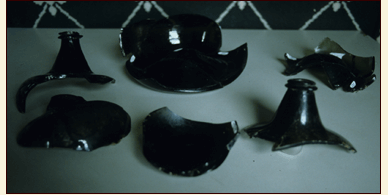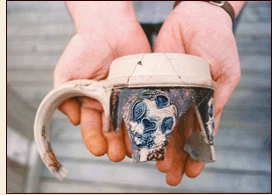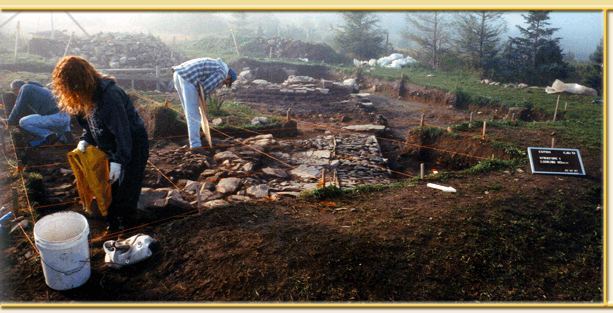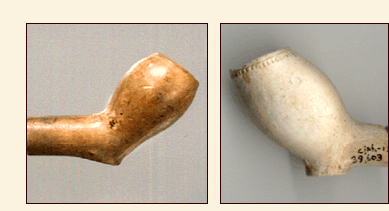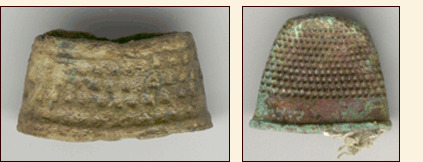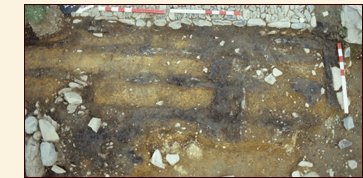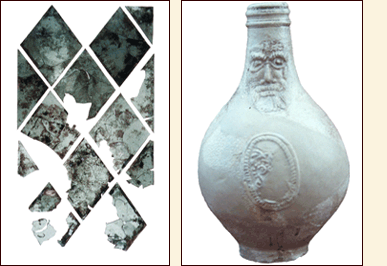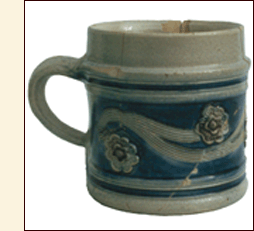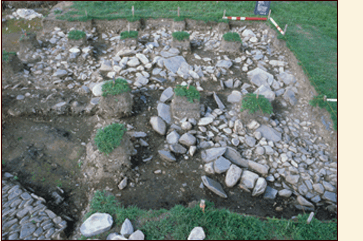 |

All the archaeological evidence from Cupids indicates an occupation continuing throughout the seventeenth-century. Some of our best evidence for this comes from the clay tobacco pipes found at the site. The English began smoking tobacco in the 1570s and from then until well into the nineteenth century most of their tobacco was smoked in clay pipes. Because these pipes were so fragile, we know that the amount of time between their manufacture, use and disposal was usually pretty short; and because their design changed so rapidly over time, we can date them with a considerable degree of accuracy.
Over 5000 clay pipe stems and 1000 clay pipe bowls and bowl fragments have been recovered from the Cupids site. In 2002 Barry Gaulton of Memorial University of Newfoundland's Archaeology Unit conducted an analysis of 205 of the more complete pipe fragments. He found that 26 of them were made in the nineteenth-century; two in the eighteenth-century; and 11 in either the late seventeenth or eighteenth-century. The remaining 166 (81% of the total) consisted of a wide variety of types with date ranges of between 1590 and 1730. Six were "little ladell" pipes made in London sometime between 1590 and 1610, 16 were made between 1610 and 1640, 17 between 1620 and 1650, 27 between 1640 and 1660, 32 between 1660 and 1690, and 28 between 1680 and 1720. The origin of these pipes is also quite diverse and includes examples made in London, Bristol, Barnstaple, Bideford, Exeter, Plymouth, Brosley (in Shropshire), Holland, New England and Virginia.
|
|



